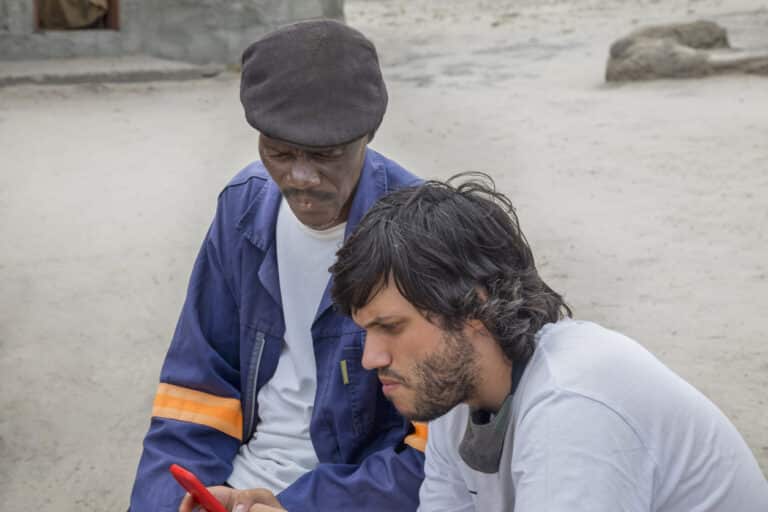Development organizations need accurate data–but collecting it isn't easy
In international development, operational work and data collection happens in the field, on a person-to-person basis. Fieldwork data collection provides organizations with an important firsthand look at what’s happening on the ground in the areas they’re working to make a difference in.
Like all field-based development work, gathering high-quality data presents a lot of challenges that organizations must overcome. Inaccurate, incomplete data leads to misconceptions, poor organizational decisions, wasted resources, and even flawed policies. An organization trying to positively impact vulnerable people experiencing difficult circumstances must highly prioritize gathering, analyzing, reporting on and learning from high-quality data.
In this 2-part blog post, we’ll feature expert insights from SurveyCTO employees with fieldwork research backgrounds and explore the following:
- What causes poor-quality data in fieldwork? (this post)
- How can organizations implement solutions in their fieldwork to address these challenges and get better quality data? (following post).
What causes poor-quality data in fieldwork?

While there are plenty of challenges in fieldwork, the following five areas cause many of the problems that lower data quality:
1. Lack of resources
NGOs and international development organizations are almost always funded by government grants, private grants, and donations. These funding streams are limited, and frequently need to be renewed on an ongoing basis. This means that development fieldwork is often not adequately funded, and data collection teams must make do with tight budgets.
Often, inadequate funding means lean field teams, which can have a big impact on the workload of individual team members—and an adverse effect on their stamina.
SurveyCTO Customer Support Specialist Amber Liskey worked for multiple international development organizations in Africa and the Middle East. She’s seen the real impact of heavy workloads on small field teams:
“A field team can start out really strong, but by the end of the data collection period, you’re not necessarily going to be able to collect the same number of surveys per day. That’s something that’s really very specific to fieldwork. Enumerators are doing things like traveling in really difficult conditions. You have to think about how many enumerators are on the team, and how many surveys can they actually accomplish in a day. Are you asking too much of them? How will that affect your data quality?”
2. Inadequate project planning and background knowledge
Going into a different culture in a remote area requires extensive knowledge and planning.
Survey CTO Product Specialist Marta Costa, whose past data collection fieldwork has taken her to Mozambique, Angola, and Sao Tome and Principe, says fieldwork requires a lot of forethought:
“It’s logistical planning with a lot of unpredictability built in. It’s not like being at a desk job. For field work to work really well you need to understand the context, the background, the language, and the culture. And you must also have a good understanding of the geography of the targeted sample.”
Without careful planning and local knowledge, field teams aren’t equipped to travel successfully across remote terrain, or interact appropriately with the local culture, and can run into all kinds of unexpected problems as a result. For example, imagine that an organization plans a food security survey, but doesn’t do adequate logistical research or planning. They fail to realize beforehand that the area they are running the survey in will be in the middle of fasting for the Muslim holiday Ramadan. Since many of their survey questions involve what the respondent had eaten that day/week, and many of the respondents will be fasting during this time, the organization’s lack of planning would skew their data.
3. Unreliable Internet
Without stable Internet, field teams that use digital tools for data collection can find themselves scrambling when the WiFi suddenly cuts out. This is especially true for more complex workflows where data gathered in one form or survey instrument is immediately needed in subsequent forms. (Think of an in-home survey on child nutrition where one form is used to gather basic household information, and a second form for each child in the home is then filled out in the same visit.)
If this complex workflow is deployed on a digital tool that only works online, and some of the homes visited have spotty or nonexistent Internet connectivity, data collection will be significantly impacted!
4. Lack of relationship-building with locals and enumerators
No one can help a field team in an unfamiliar area like the local people. Sometimes, even well-intentioned teams can run into issues with locals that they did not expect. Our fieldwork experts both noted that sometimes, different organizations may work heavily in the same areas, and local people will become fatigued from the constant visits and surveys (which are often quite similar!) which can lead to hostility.
There can also be significant cultural divides between field team managers and the enumerators that are hired from local communities to conduct surveys. Differences in communication styles, religion, gender roles, and more can impede these crucial relationships—especially when field teams don’t have the time or bandwidth to invest in on-the-ground relationship-building.
5. Manual data collection

Using pen and paper to gather important data in fieldwork creates significant challenges. Paper is easy to lose or become damaged, which is a significant data security risk. It is costly to maintain space to safely store a high volume of paper forms, and to transport it for scanning and analysis. It’s time-consuming for enumerators to write down respondent answers, which can lead to fatigued teams summarizing responses or not accurately representing them. It also eliminates the possibility of sophisticated real-time data monitoring.
Paper is also more error-prone. Handwritten data can be illegible, and it’s very difficult to enforce any formatting standards for numbers, dates or other important data points when everything is captured by hand. Paper forms also eliminate the possibility of using more sophisticated survey design techniques like built-in skip logic or automated calculations to validate data.
Fortunately, all these fieldwork challenges have some practical solutions. These solutions won’t make your fieldwork perfect or problem-free, but consistently implementing them will lead to better data—and better outcomes—over time. Check out Part 2 to explore solutions!




